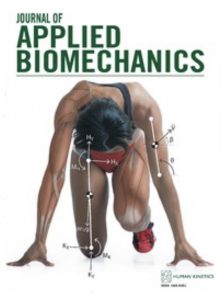Publications

Correlations Between the Trochanteric Soft Tissue Stiffness and the Pelvis Stiffness During Sideways Falls
Authors: Kitaek Lim 1, 2, Seung Su Kim 1, 2, Chung Hwi Yi 2, Ohyun Kwon 2, Hye-Seon Jeon 2, Sung Hyun You 2, Woochol Joseph Choi 1, 2
Affiliations:
- Injury Prevention and Biomechanics Laboratory, Department of Physical Therapy, Yonsei University, Wonju, South Korea
- Department of Physical Therapy, Yonsei University, Wouju, South Korea
Journal: Journal of Applied Biomechanics - October 2025, Ahead of Print (DOI: 10.1123/jab.2025-0071)
-
Field & Applications:
- Medical
- Orthopedics
- Gerontology / Ageing
- Musculoskeletal health
- Injury prevention
The pelvis and trochanteric soft tissue stiffness influence hip impact force during falls. We examined potential relationships between the stiffness values acquired from different methodologies.
Twenty-six individuals simulated sideways falls. During trials, force-deformation data of the trochanteric soft tissue were recorded, then fitted to polynomial and exponential functions. Stiffness was determined as a slope of the tangent line at maximum deformation (Ks_1st, Ks_2nd, and Ks_exp) and at 0.4 N (Ks_2nd_0.4 N, Ks_exp_0.4 N). Similarly, force-deformation data of the pelvis were fitted exponentially to determine the pelvis stiffness at peak impact force (Kb). We also used a clinical device to measure the trochanteric soft tissue stiffness (Ks_myoton). Correlation and regression analyses were performed.
The Kb was correlated with Ks_1st and Ks_2nd (P < .05) and decreased 1.7 and 0.7 kN/m for every 1 kN/m increase in Ks_1st and Ks_2nd, respectively (R2 = .23 and R2 = .21), but no variables were correlated with the Ks_myoton (P > .05). When normalized, however, both Kb and Ks_myoton were correlated with Ks_1st and Ks_2nd (P < .05).
These findings provide insights into hip impact dynamics, suggesting that trochanteric soft tissue stiffness measured with a clinical device may serve as a predictor of pelvis stiffness during falls.
Keywords: impact biomechanics, hip impact dynamics, hip fracture risk, normalization, clinical measurement device
In summary, our findings provide insights into hip impact dynamics, suggesting that the stiffness of trochanteric soft tissue estimated through falling experiments is a predictor of pelvis stiffness during a fall. Moreover, when appropriately normalized, trochanteric soft tissue stiffness measured with a clinical device shows comparable predictive value.


